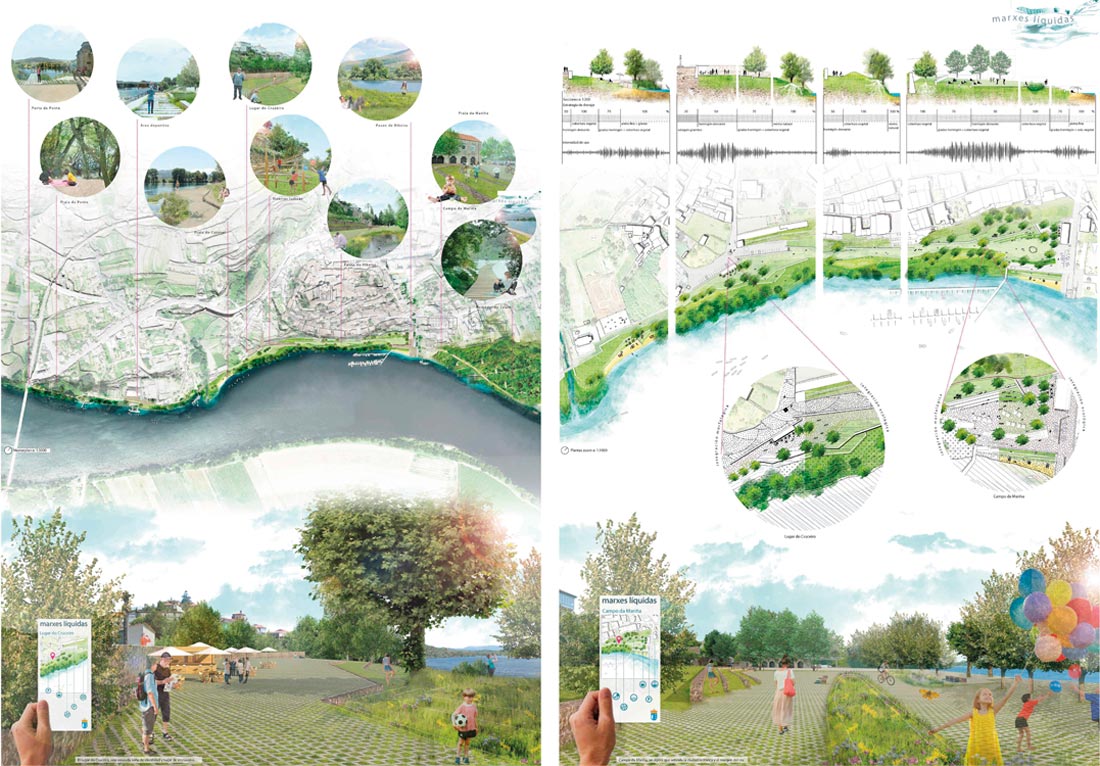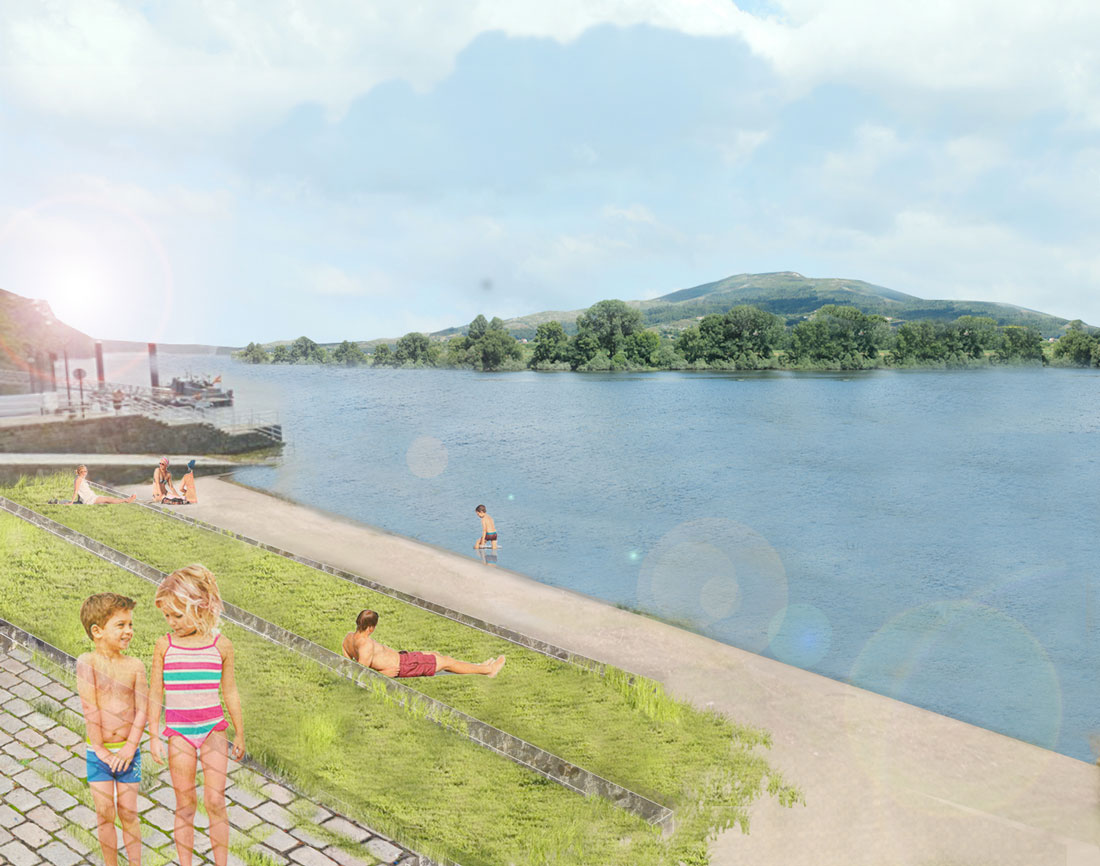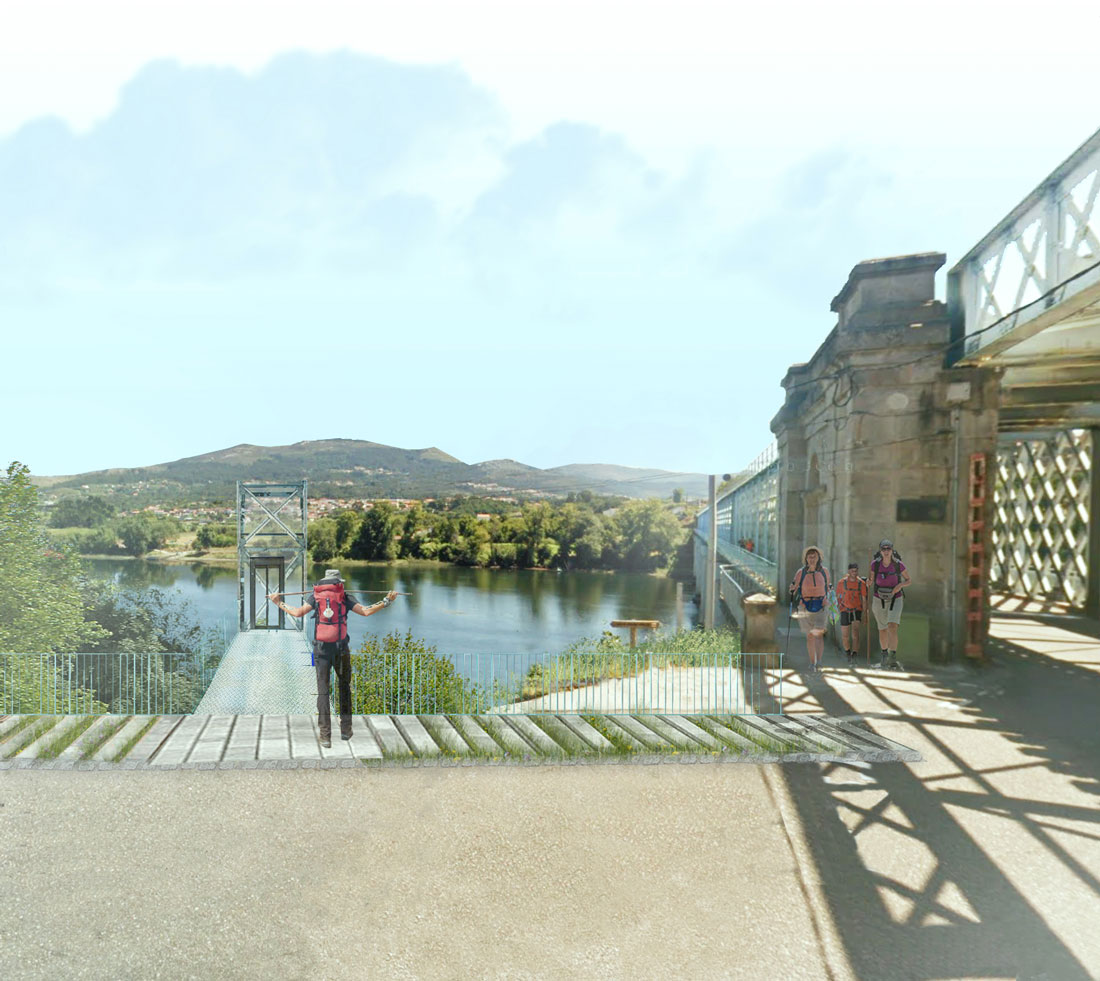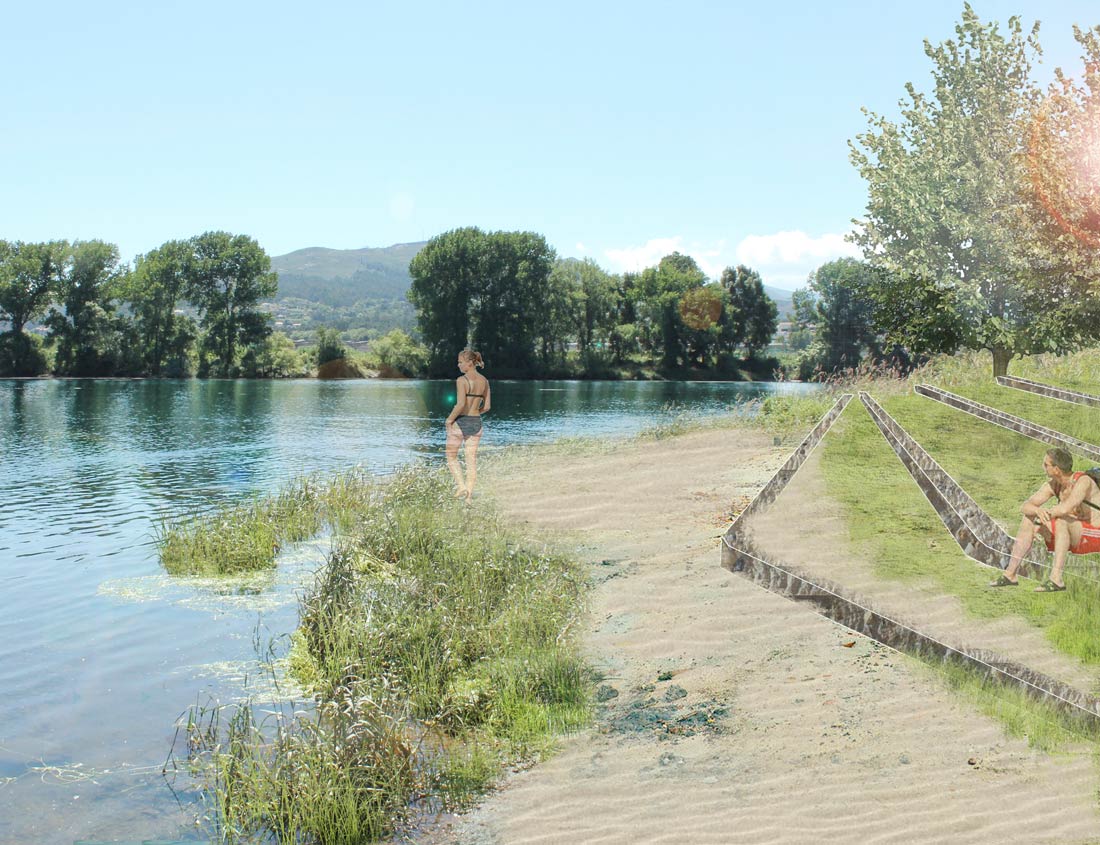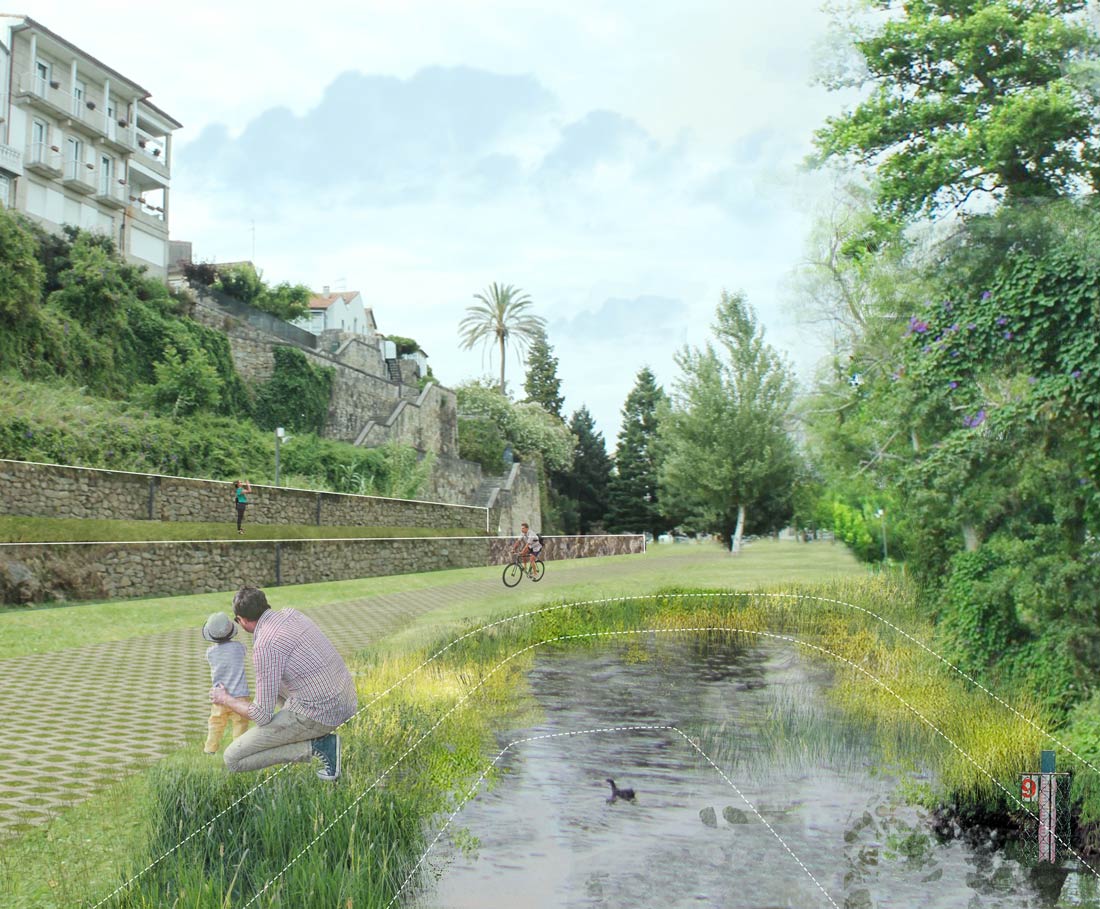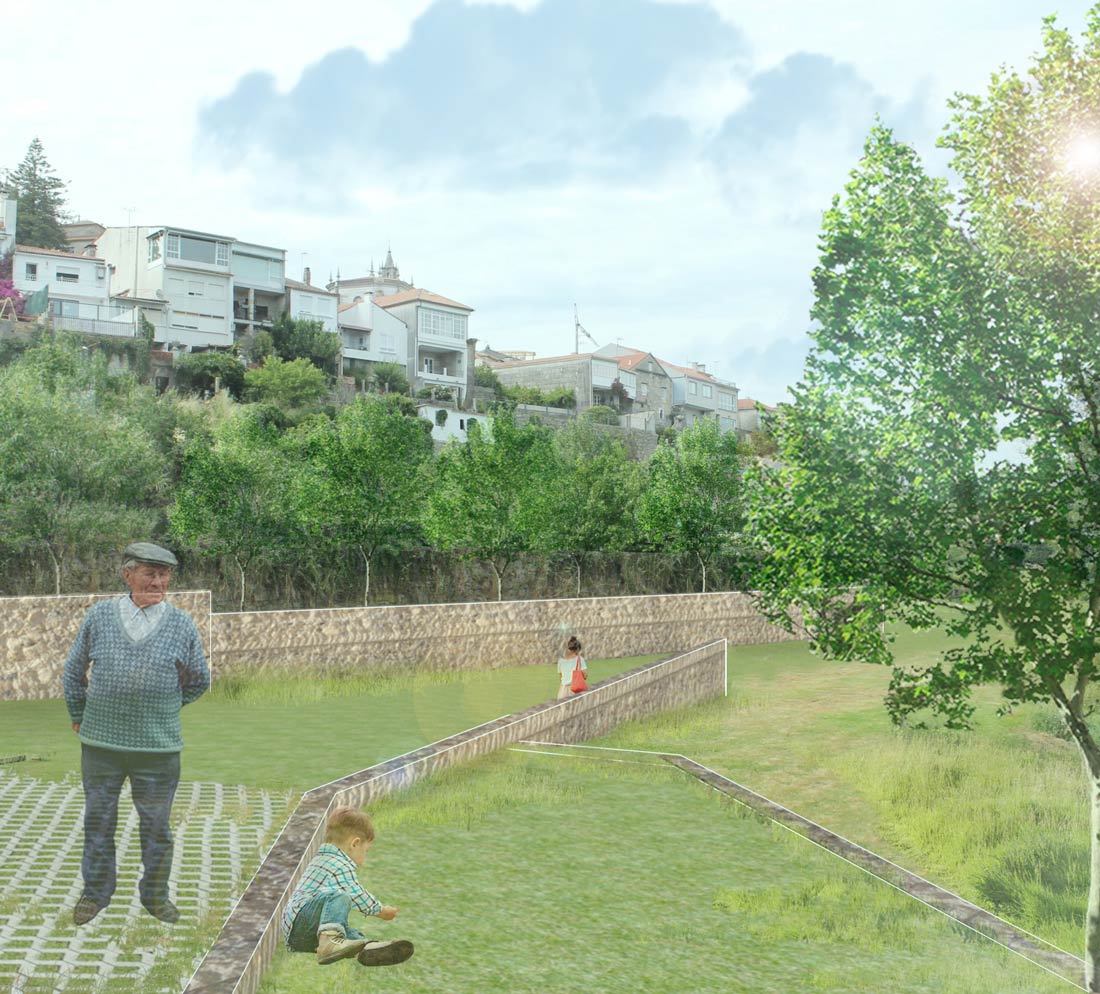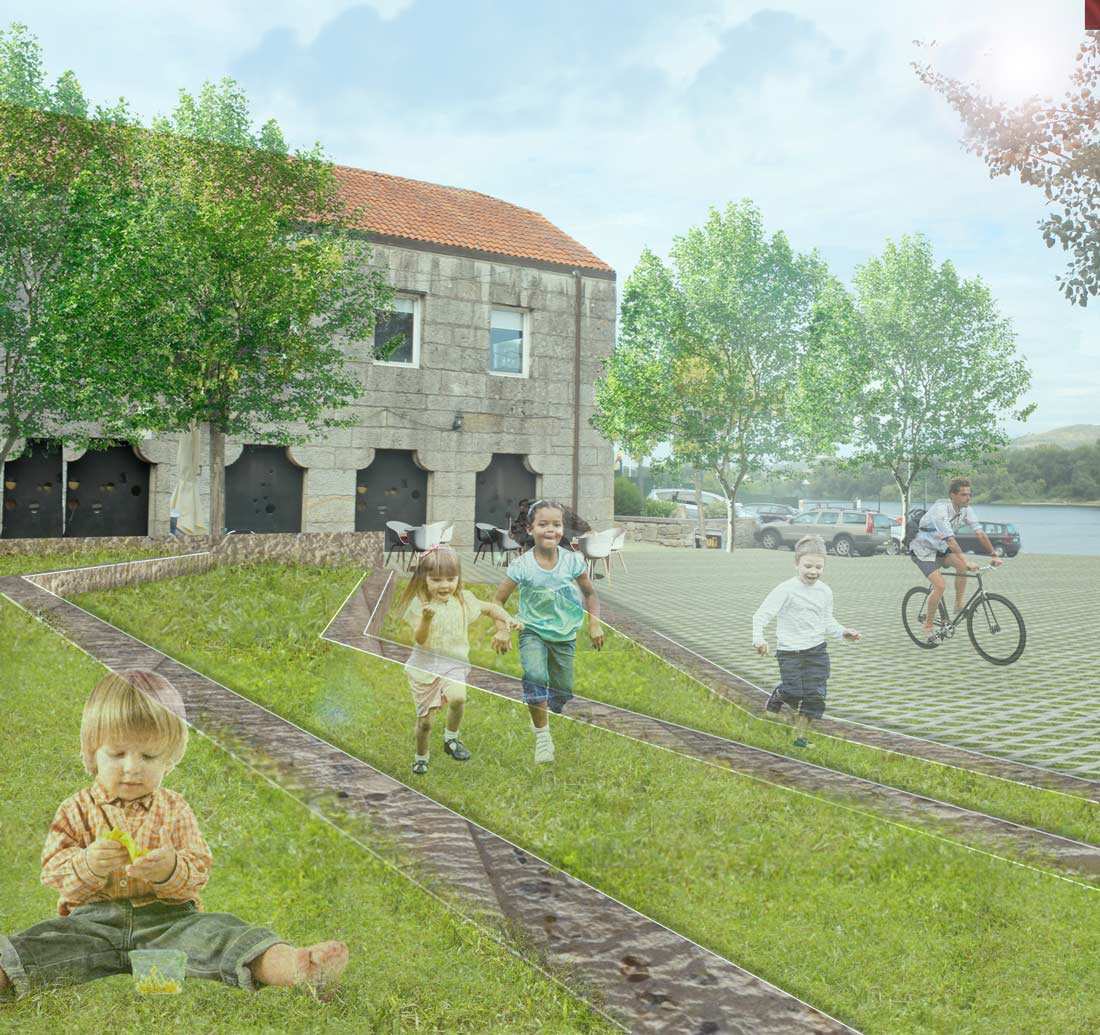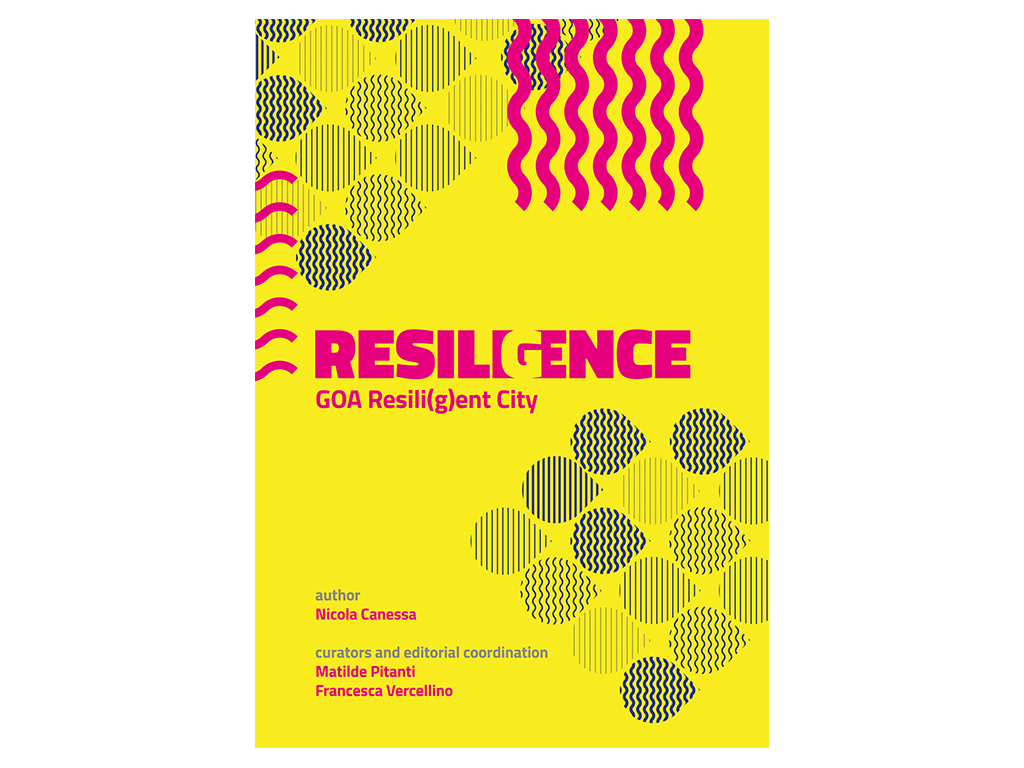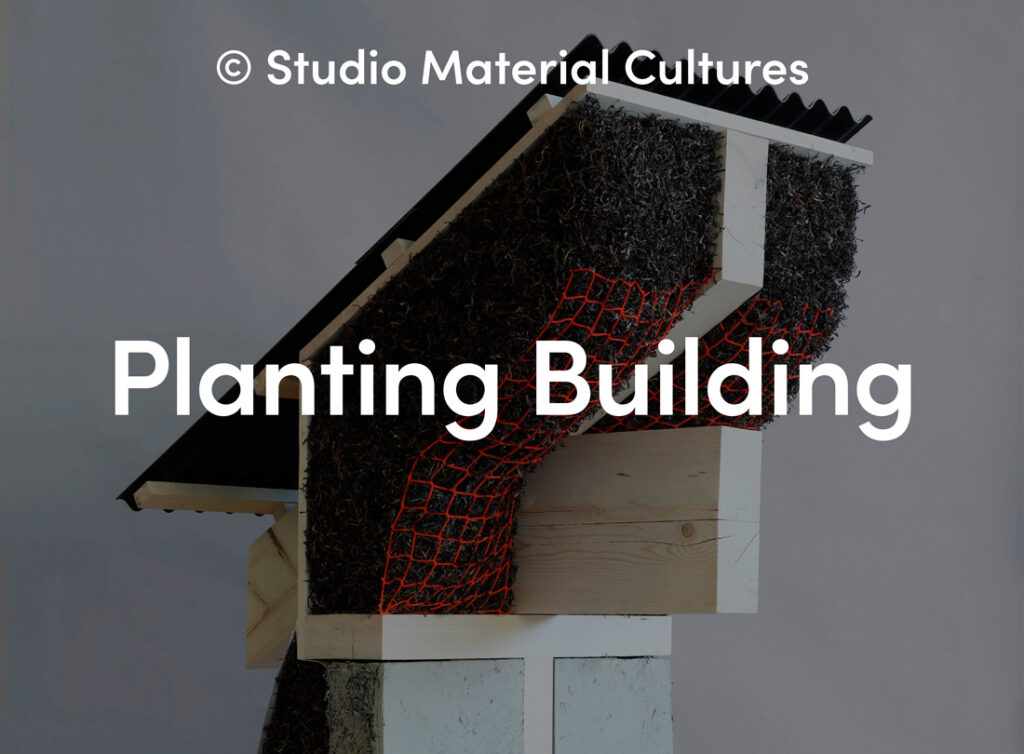Tui, an imposing city above the Miño river, is one of the most ancient cities in Galicia. It has been inhabited for the last 2,000 years. Starting from its cathedral, a landmark situated at the highest point of the historic hill, Tui’s urban structure gradually spreads down until it reaches the riverbank.
Throughout history, Tui’s profile was marked by the city’s walls, and this fact determined its development until the walls were demolished at the beginning of the 19th century to open the city. However, today the stone-built urban center from within the walls is still visible, along with the remains of the oldest orchards, monasteries and the historical pathways in the surroundings.
Now, some of these historical promenades are the main public spaces of the city: landscaped areas next to the Miño river that have become gardens and parks. Most of them are not well connected, so the riverside does not have a unitary character and is not recognizable as a space in itself.
From the highest part of the city, it is possible to see the river flowing into the Atlantic Ocean. This oscillation between riverbank and mountains is one of the main features of the Miño’s low-lying region: interlinking mountains and valleys with different breadths reaching the river. The exchange between fresh water and sea water determines the varied vegetation on its banks; this is the river-sea relationship of the Miño. The riverside walkway through Tui offers an experience of different landscape situations, which are defined by the river valley itself as a broader geographical area, revealing a landscape that results from the connection between the city-hill and the river-sea conditions. During the year, waterlogged areas appear along the riverbank because of its flow variations, bringing about episodes of flooding that reaches the city walls.
The proposal is based on this identity condition of fluid layers and dynamics and the city’s relationship with the river, summed up as Liquid Margins. The area under consideration is located between the Miño river and the city of Tui, from the international bridge to the Rosendo Troncoso gardens, with a focus on the riverbank, its spaces and uses, and its connection to the existing fabric and services.
The river-city dialogue is reached through two complementary strategies: first, the morphological adequacy of the layers composing the city. Starting from the mix of the different fluid folds of materiality resulting from the evolution of the city, they are developed in order to embrace the banks of the Miño, providing it with a new ‘margin’ that plays with topography, walls, stands, soils with different infiltration capacity, and vegetation masses. The reflection of the city on the river is preserved, enhancing the visual relationship between the city and the river. At the same time, a straight path articulates and activates different public spaces, while linking the forest with the riverside. All these spaces have been designed to be able to host multiple uses, in harmony with the changing conditions of the place.
The second strategy deals with ecological diversity, embracing the river’s dynamics. From the river to the city, there is a sequence of layers of humid areas, herbaceous vegetation, vegetated micro-reliefs and filtering pavements, with the purpose of absorbing floods. As such, the proposal is integrated with fluvial dynamics and endowed with resilience, being able to adapt to floods and ensuring sustainability over time. The sequence of terraces and walls negotiates with the topography of the place, intensifying accessibility and ensuring a path to make the shore accessible in case of floods.
This attitude towards the site, its dynamics and ecologies not minimizes environmental impact, but also involves its regeneration, widening the range of species that may inhabit the shore. In this way, the project is consistent with the contemporary conception of rivers as ecosystems of the Water Framework Directive, paying special attention to transition ecosystems (wetlands, riverbanks, etc.) and promoting biodiversity and resilience to the effects of climate change.
Some of the key proposal criteria are directly related to the reuse and improvement of the existing heritage, reopening the riverbank to the delight of the community and improving the visual permeability towards the river, while maintaining its accessibility. The project combines the nature of the river, in keeping with its different seasonal changes, with phenomenological and programmatic diversity. Through the recreation of an imaginary, focused on the experience of walking, we recover the river.
